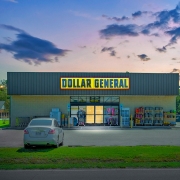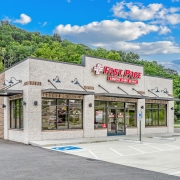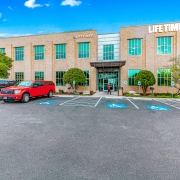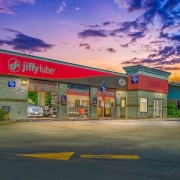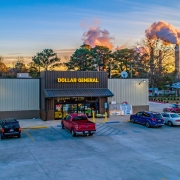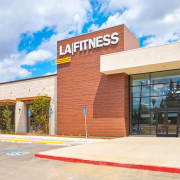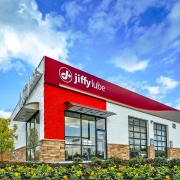One of the biggest head-scratchers in commercial real estate leases are common area maintenance (CAM) charges or expenses. In a nutshell, common areas cost money to maintain and their upkeep is essential to the tenants that occupy the space and their customers. At the end of the year, the CAM charges are reconciled by the landlord and passed on to the tenant.
Let’s take a deeper dive into what CAM charges are, how they are calculated and managed, and who is responsible for the costs.
What Are Common Area Maintenance (CAM) Charges?
CAM charges are the costs of maintaining these common areas and are paid by tenants to landlords to help cover costs associated with overhead and operating expenses.
Tenants and landlords have different viewpoints when it comes to what should be included in the CAM section of a lease. For landlords, CAM expenses mean any and all expenses incurred by the landlord in order to maintain, repair, operate and manage the commercial property. But tenants see these common area maintenance charges in a broader sense as the upkeep of common spaces used by all tenants such as hallways, parking lots, public bathrooms, and building security.
What’s Included in CAM charges?
CAM charges depend on the property type (retail, commercial, office, industrial, etc.), tenant, type of lease (gross, modified, or net), and more. Here are some examples of typical operating expenses a landlord can incur and label as a common area maintenance charge and bill the tenant for:
- Repair and maintenance of parking lots
- Snow removal
- Trash removal
- Landscaping
- Janitorial services
- Pest control services
- Security
- Insurance
- Real estate taxes
- Center signage
- Common area utilities
- HVAC maintenance, and
- Landlord’s administrative fees
The list covers a large variety of areas within the property, and depending on the space, it could have more CAM locations such as elevators, outdoor lighting, irrigation system, window washing, loading docks or delivery areas, sidewalks and driveway, renovations and other potential common area maintenance charges.
CAM charges can be hard to identify, so it’s important to ask your landlord the exact expenses included in your lease.
How Do You Calculate CAM Charges?
At the start of the year, the landlord will forecast the CAM expenses for the entire property and then divide the amount across the tenants in the building. Your percentage of CAM charges or pro-rata share will be calculated by dividing your square footage by the gross leasable area of the building. The total will be figured into your monthly operating expense so it can be paid throughout the year.
At the end of the year, the landlord will reconcile the actual CAM charges with the forecasted CAM cost and provide you with a statement. The statement will let you know if you have underpaid or overpaid, and you will either receive a credit or you will owe the difference.
For a triple net lease property owner, which we will discuss later in this article, the tenant pays for 100 percent of those charges as stated in the lease. Most of the time, NNN tenants are national franchises such as Walmart, CVS, Walgreens, Starbucks, and Family Dollar.
Can CAM Charges Be Negotiated?
Simply put, yes. But there are a few things to consider. CAM charges can be divided into two categories – controllable and uncontrollable.
- Uncontrollable expenses include things like utilities, taxes, and insurance.
- Controllable expenses are pretty much everything else listed in the previous section.
The good news is many controllable CAM expenses are negotiable depending on how efficiently the space is being managed. However, the property tax and insurance costs are not negotiable and fall under the uncontrollable category.
This is where having a good tenant representation broker is a must. The broker is often able to negotiate a cap on the percent that a landlord can increase the common area maintenance charges year-over-year.
There are two types of CAM caps – cumulative or non-cumulative.
Cumulative caps are preferred by landlords as it gives them the most flexibility in choosing what CAM charges will benefit their property.
For example, if the landlord and tenant agree to a 3 percent cumulative cap, and CAM expenses increase by 2 percent in the first year, then the tenant would pay the 2 percent increase. If CAM expenses increase by 4 percent in the second year, then the tenant would pay a 4 percent increase. This is because, in addition to the 3 percent cap, the landlord can recover the 1 percent increase that went unused in the first year.
Non-Cumulative caps are preferred by tenants as it allows them to budget and does not allow the landlord to recover any unused increases from the prior years. For example, if the landlord and tenant agree to a 3 percent non-cumulative cap, and the CAM expenses increase by 2 percent in the first year, then the tenant would pay the 2 percent increase. If the CAM expenses increase by 4 percent in the second year, then the tenant would pay for only the 3 percent increase.
Types of Leases For CAM Charges
There are several lease types and this can change up how CAM charges are written into the lease. Here are some of the common lease types and how operating and CAM costs are allocated.
Gross Lease: In a gross lease, the property owner is financially responsible for the building, and covers all the expenses associated with its operation (including taxes, insurance, and maintenance). To help recoup some of these costs, the property owner builds them into the monthly rent amount that a tenant pays for use of the building. The property owner pays all of the expenses associated with the building, in exchange for a monthly, all-inclusive rent sum.
Modified Gross Lease: In a modified gross lease, the tenant is responsible for some (but not all) of the operating expenses of the property but they still get to pay them as part of one monthly rent amount.
Net Lease or NNN lease: In a triple net lease, the tenant absorbs all of the operating expenses and property costs into their own business in addition to monthly rent payments, such as property taxes, insurance premium, maintenance, repairs and upkeep
Which Investment is Best When Dealing With CAM Charges?
NNN properties provide investors with a relatively low-risk (and very low touch) option for creating a consistent, long-term revenue stream.
Triple net properties are attractive to many investors because they offer reliable returns over time, with little to no landlord duties since the tenant is typically responsible for costs and responsibilities of successfully operating their business in the location. Triple net investments are also a great way to build equity and add diversity to an investment portfolio. As such, we’re seeing many investors looking to switch from high-touch property types (such as apartment complexes) to low-touch, consistent return NNN properties to add a line of passive income aligned with their investment strategies.
To sum up, a triple net investment is often considered a gold mine investment for those who don’t have the time to deal with property issues, want to avoid CAM charges, and filing property taxes, etc. But not all net lease properties offer the same type of investment opportunity. If you’re considering NNN investing, you should understand all the nuances of this type of real estate, so you choose the best option for your portfolio and overall investment goals.
Why It’s Important to Understand CAM Charges
Unfortunately, there’s no widespread agreement on what exactly CAM charges may include. And, the common area costs included in CAM charges section of a lease can vary from market to market and from one landlord to another.
For tenants, there are some strategies that you and your tenant representative broker can do to protect you from arbitrary CAM charges.
- Research other buildings in the area and see how comparable their CAM charges are to the market
- Ask the landlord for a CAM history
- Negotiate the terms of your CAM
Understanding CAM charges is one of the most difficult parts of negotiating a lease. CAM charges have a significant impact on the property’s NOI and the amount the tenant will pay to occupy the space. This is why it’s very important for CAM charges to be clearly defined in the lease before signing.
Sands Investment Group is America’s fastest growing net lease investment company, with over 2,200 transactions in 48 states (to the tune of $4.7 Billion) since 2010. Our experienced team of net lease advisors and brokers are experts in the NNN market and can help you find your next best investment opportunity by helping you navigate through all the opportunity and risk factors of every NNN property that meets your investment goals.
Want to learn more? Get in touch with an expert net lease advisor today by calling 844.4.SIG.NNN or sending us an email at info@SIGnnn.com.

